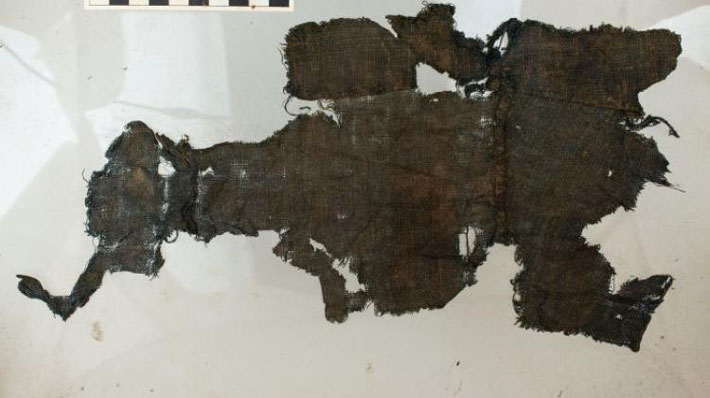 WARSAW, POLAND—Science in Poland reports that Magdalena M. Woźniak of the University of Warsaw analyzed 17 fabric samples recovered from the site of Old Dongola, the capital of the Nubian Kingdom of Makuria (ca. A.D. 400–1400), which is located in what is now Sudan. The fabrics were recovered from residential areas and garbage dumps of the city and dated to the seventeenth and eighteenth centuries. Most of the samples were wool, but because the sheep were likely raised for milk and meat, the wool was not of high quality. Such wool fabrics were usually worn by women, Woźniak said. Cotton fabrics, usually worn by men, likely came from plants grown in the Nile Valley. Very little linen was recovered, while the one silk sample is thought to have come from the home of a local ruler. Woźniak explained that the fabrics recovered from Old Dongola were very worn, and were probably first used as clothing; then for patches, rags, or blankets; and eventually may have been used to plug structural cracks. Most of the scraps that have survived, she added, came from the edges of fabric, since they were thicker and reinforced with an extra strip of fabric decorated in patterns of yellow, blue, and red that made the edges more durable. To read about medieval wall paintings found in a room beneath a sixteenth-century house at Old Dongola, go to "A Painted Prayer," one of ARCHAEOLOGY's Top 10 Discoveries of 2023.
WARSAW, POLAND—Science in Poland reports that Magdalena M. Woźniak of the University of Warsaw analyzed 17 fabric samples recovered from the site of Old Dongola, the capital of the Nubian Kingdom of Makuria (ca. A.D. 400–1400), which is located in what is now Sudan. The fabrics were recovered from residential areas and garbage dumps of the city and dated to the seventeenth and eighteenth centuries. Most of the samples were wool, but because the sheep were likely raised for milk and meat, the wool was not of high quality. Such wool fabrics were usually worn by women, Woźniak said. Cotton fabrics, usually worn by men, likely came from plants grown in the Nile Valley. Very little linen was recovered, while the one silk sample is thought to have come from the home of a local ruler. Woźniak explained that the fabrics recovered from Old Dongola were very worn, and were probably first used as clothing; then for patches, rags, or blankets; and eventually may have been used to plug structural cracks. Most of the scraps that have survived, she added, came from the edges of fabric, since they were thicker and reinforced with an extra strip of fabric decorated in patterns of yellow, blue, and red that made the edges more durable. To read about medieval wall paintings found in a room beneath a sixteenth-century house at Old Dongola, go to "A Painted Prayer," one of ARCHAEOLOGY's Top 10 Discoveries of 2023.
Old Dongola’s Historic Fabrics Analyzed
